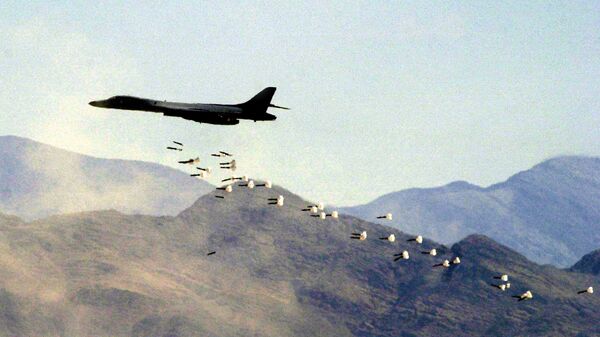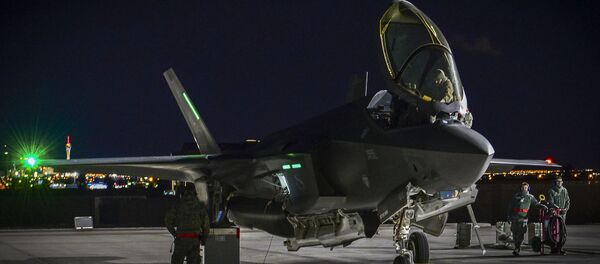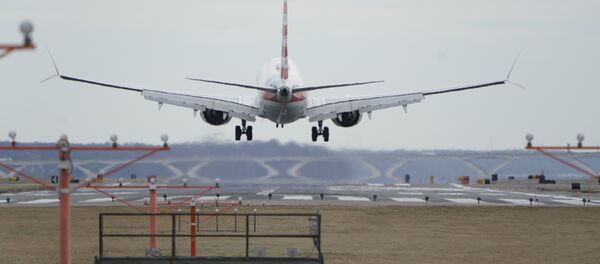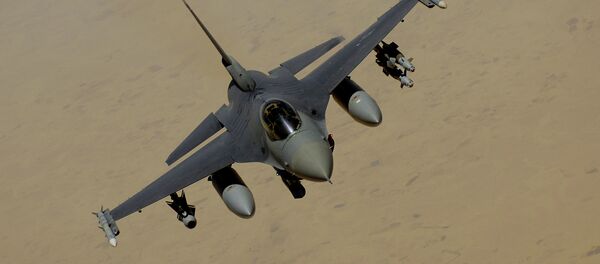The US Defense Department (DOD) Inspector General (IG) blasted the US Indo-Pacific Command's air training ranges in an April 17 report, saying pilots at the drilling grounds "could not train as they would fight."
"Training ranges and airspace did not have the capability or capacity to support aviation readiness for units assigned to USINDOPACOM," says the report. "The training land, airspace, impact areas and electronic warfare systems were more limited than what was required for training with ordnance and the aircrafts' capabilities."
The report noted ranges in the US states of Hawaii, Alaska, Nevada and Arizona, as well as ranges in Japan and South Korea, all had serious problems with outdated equipment and unimaginative drills.
For example, the US Navy's premier air-to-air and air-to-ground training facility, Fallon Range Training Complex in Nevada, "had electronic warfare systems ranging from a 1970 surface-to-air simulator to a 2006 mobile threat emitter simulator," according to investigators. "These electronic warfare systems did not represent current threats."
At the Joint Pacific Alaska Range Complex south of Fairbanks, investigators found that advanced F-22 Raptor and F-35 Lightning II jets couldn't detect the 1980s-era Soviet missile systems.
"The aircraft technology is more advanced than the range electronic warfare systems," the report states, and those range systems "do not replicate near-peer threats."
Meanwhile, at Arizona's Marine Corps Air Station Yuma, pilots of the F-35B lamented they didn't have adequate space to fly or shoot weapons.
"As a result of the lack of airspace, the pilot stated that F-35 pilots trained in simulators, which could be linked so that the pilots could fly in their four aircraft fighting formation," the IG reported, noting that the range's electronic warfare systems were also outdated.
Pilots at Yuma and Alaska complained that targets were uninventive, too, many not even moving, which limited their ability to train with laser-guided weapons.
Things across the Pacific were no better. At the Draughon Range on Misawa Air Base in northern Japan, where Japan's F-35s are based, pilots found themselves pitted against surface-to-air threats "from the 1960s and 1970s," and the firing range on the island of Tori Shima was "a piece of land that was exposed only during low tide," according to the report.
Altogether, the IG said the situation has "negatively impacted the DoD's ability to adequately fund range modernization," and the Pentagon "has not developed a comprehensive plan to address the range capability and capacity gaps across the DoD," something it's required to do by the 2018 National Defense Strategy.
However, it's not just in the air that US servicemember training is chafing: US Army officials lamented to Military.com earlier this week that young, non-commissioned officers struggle to navigate their squads through terrain both urban and rural.
The US Army's Asymmetric Warfare Group (AWG) has filed a series of damning reports since March 2018 showing small-unit leaders "lack proficiency in key skills required for any type of combat," according to Military.com, and the Army's Noncommissioned Officer Academy reports it's routine for sergeants to fail basic tests with a map and compass.
"This is a perennial problem that we in the task force have been dealing with," retired Maj. Gen. Robert Scales, a key adviser to the Defense Department's Close Combat Lethality Task Force (CCLTF), told Military.com. "Small-unit training opportunities, often even in the best of units, are fairly limited for many reasons."
Both the IG report and CCLTF place the blame for these training and readiness deficits on financial back-and-forth of recent years as well as the US military's preoccupation with the wars in Afghanistan and Iraq since 2001.
"In that time, small-unit readiness has atrophied, partly because of the lack of resources and tools available for infantry squads and platoons to get the repetitive, intense training needed to develop finely honed fighting skills," Military.com wrote.







